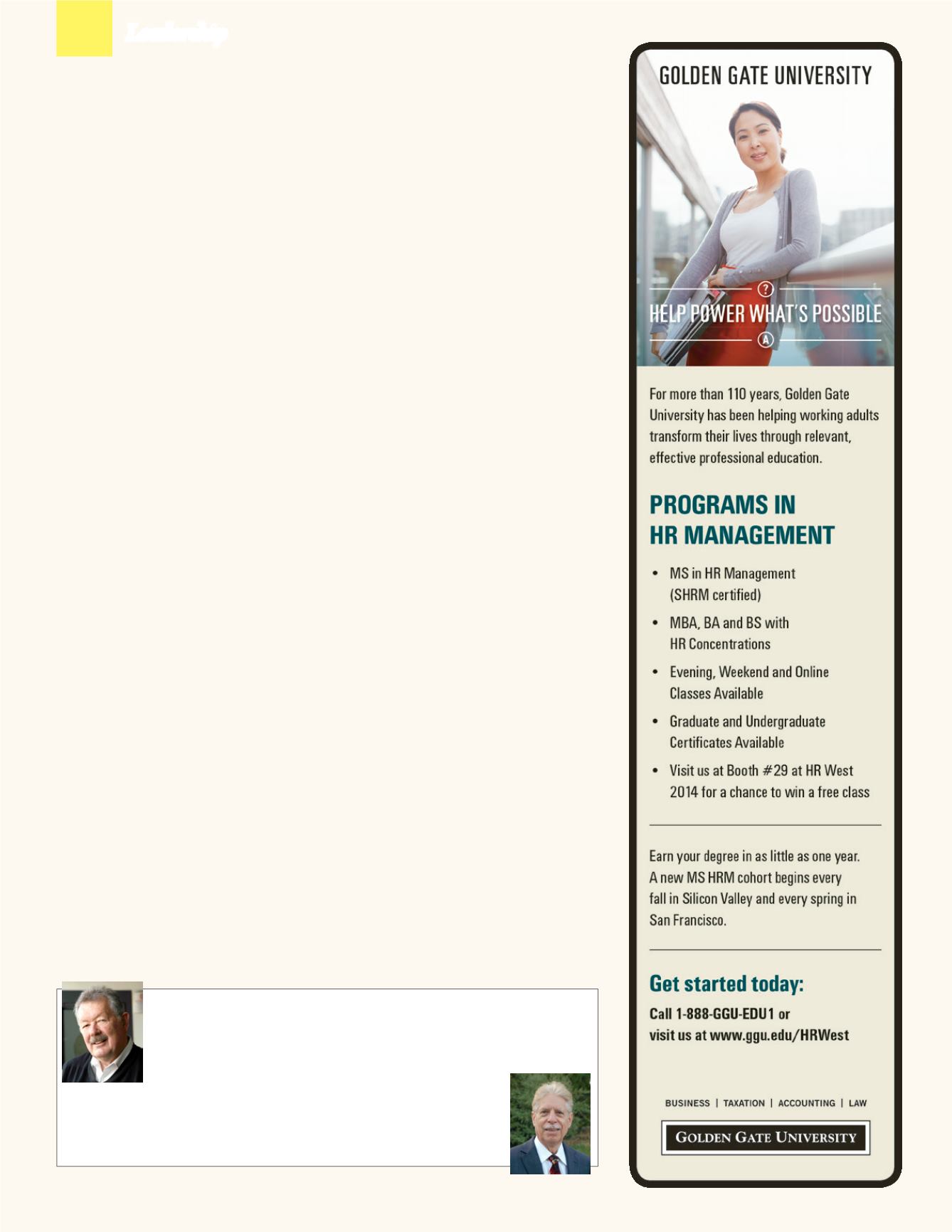
Leadership
50
HR
West
Fear Not Technology
Have you ever been in a room during an Operations
meeting, or an R&D meeting, or an IT meeting, or any
other group with a mountain of specialized language
and activities? It can be especially overwhelming when
you are new to the group. What to do about that?
First of all, step back and think about why you are
there. It’s not to help them solve their specialized
issues; it is to help them solve their organizational
issues. Getting into the “tech” of the group you are
supporting is a very good thing, but not the essential
thing for you. So, if you let the intimate details of their
tech problem occupy too much of your bandwidth,
you’ll be sacrificing brain cells that could be devoted
to organizational problems.
With respect to technology you do need to interact
with, like Excel and the HRIS, you may or may not have
a natural affinity for it. Those technologies, even the
clumsy and non-intuitive ones, are ultimately intended
for a general population and are not like some CAD
systems where you need to be an engineer to use
it. So with those, persistence is all that it takes. Well,
persistence and perhaps and a few friendly people
who can help you over the bumps.
Reacting to Change
Most people do not like to have their routines disrupted.
That’s human nature. When I see a job description that
identifies dealing with change as a required skill I have
to chuckle. “Dealing with change” might as well be
called “going to work” in our world today.
As an HR professional, a big part of your job is
helping people in your organization prepare for
change, adapt to change, understand change,
and continue to be productive during change.
Sometimes it requires especially significant focus
on individuals or small teams when retaining critical
talent is at stake.
What about when HR is the place where unexpected
change occurs? That’s when you need to make sure
that the Shoemaker’s kids have shoes too. That’s
when you need to apply your skill and knowledge
associated with change management to your
organization, and maybe even yourself. These are
the points in time where character is built.
Character means doing the right things under
pressure and when no one can see what you are
doing. Well, I don’t know if in today’s world there is
such a thing as “no one seeing what you are doing,”
but the point is the same.
When you handle yourself well under fire and do
the right things, you are in every sense displaying
leadership. You are setting an example, as well as
showing competence.
Creating Change
Let’s go back to our original analogy of the workplace
as an organic entity. Just like in a healthy body
where everything, every cell, is always changing,
organizations are the same way. It’s the big changes
that get all the attention. But in reality, nothing stays
exactly the same.
Disruptive Innovation is what Steve Jobs did
to put Apple Computers on the map. It means
creating something so radically different that to a
large degree the competition’s product or service
becomes obsolete. It’s leadership on steroids.
And there we place before you the challenge to
become a disruptive, innovative, leader. The principles
briefly outlined in this article will get you there. Being
proactive, thinking strategically, being fearless,
standing your ground, working with pure integrity and
ever so importantly, using all of that wonderful brain
power you were hired for in the first place.
HR
Jay Elliot is the Founder and CEO of iMedgo, Inc. which offers emergency smartphone applications and mobile health
monitoring systems.As Apple’s Senior Vice President of HR and Operations, Jay worked side-by-side with Steve Jobs on
a daily basis. His experience as an executive at both IBM and Intel helped him to recognize how Steve Jobs’ extraordinary
leadership propelled Apple Computer to become the most valued brand on earth.His books, The Steve Jobs Way and
Leading Apple with Steve Jobs have sold millions of copies worldwide. He is currently developing a leadership course
based on his experience with Steve. Reach Jay at
.
Jay Orlin is a Learning and Development expert. He has been recognized for his accomplishments by employers and
peers for many years in, and beyond, Silicon Valley. He is expert in building learning strategies, front-end analysis,
designing curricula, and implementing programs. A past-president of the International Society for Performance
Improvement and manager and mentor for many instructional designers, his course designs and customizations
effectively target an organizations highest leverage opportunities.


